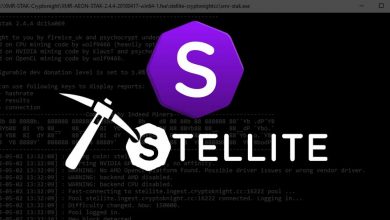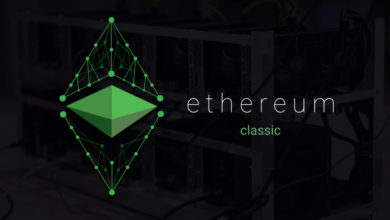How to mine Ethereum (ETH)? GPU mining Ether in 2022
This is a complete beginners guide on how to mine Ethereum (ETH)? GPU mining ETH in 2022. We’ll cover what mining is and how to mine Ethereum? What do you need to mine Ethereum? How mining works and the types of mining. Lastly we’ll analyze whether it is profitable to mine Ethereum in 2022?
Ethereum which is using the Ethash Proof-of-Work algorithm can be effectively mined using both GPU and Ethash ASIC mining machines. But here we are only going to cover GPU mining ETH. We’ll explain the hardware needed, the software utilized, how it is configured, and what you can do to efficiently mine Ether from home.
There are already multiple tutorials available on the web on how to mine Ethereum. But most of the guides seem to be outdated and they are no longer being updated. The main reason being Ethereum’s upcoming switch to Proof-of-Stake.
Ethereum
Ethereum is the second biggest Proof-of-Work network. It is also the second most popular cryptocurrency having the second largest market capitalization after Bitcoin.
It is an open source blockchain and a decentralized computing platform that enables developers to build and deploy smart contracts and decentralized distributed applications. Also it is the first blockchain to feature smart contracts.
Ether (ETH) is the native currency of the Ethereum network. It is used in decentralized applications, smart contract transactions and in peer to peer payments.
Like Bitcoin, Ethereum also currently uses the Proof-of-Work (PoW) consensus mechanism to secure its network. Miners play a crucial role currently and they will be able to continue mine Ethereum on the Proof-of-Work chain until the protocol shift to Proof of Stake (PoS) algorithm is complete. The transition to ETH 2.0 with PoS consensus is expected by the end of 2022 or by q1 2023 which will render mining obsolete. Now what is mining?
What is mining?
Mining is a process of creating a block of transactions and adding it to the blockchain. Its a way of producing blocks, verifying transactions, securing the network, and receiving rewards.
Miners use their time and computing power with the help of dedicated hardware to solve complex mathematical puzzles. They do so to process transactions and to produce blocks. Every block of transaction is verified and then added to the Ethereum blockchain. This whole process allows the network to operate and it also simultaneously protects it from malicious attacks.
In return for verifying transactions and adding it to the public ledger and also for securing the blockchain miners receive block rewards in a form of newly generated coins. Its a predetermined amount of ether which a miner receives for every validation of a block. In addition to that miners also receives transaction fee from each mined block.
ETH block rewards?
How much is a single Ethereum block worth? On average a block is mined every 13 seconds. Unlike other PoW blockchains, Ethereum rewards miners for producing blocks even if it didn’t make it to the longest chain. They are called stale blocks. Learn more about uncle and stale blocks in Ethereum.
Right now there is a static block reward of 2 ETH + the transaction fees and some uncle rewards which is relatively small by comparison. So it averages around 2.1 ETH per block, plus or minus a few percent.
Refer to the table below to know more:
| Items | Info |
|---|---|
| Website | https://ethereum.org/ |
| Block Explorer | https://etherscan.io/ |
| Consensus | Proof of Work |
| Mining Algorithm | Ethash |
| Total Supply | Unlimited |
| Consensus | Proof of Work |
| Block Time | 15 seconds |
| Block Reward | 2 ETH |
| Mining Equipment | GPUs & ETH ASIC miner |
Also to know learn about Ethereum supply and to find out how many ETH will ever exist we suggest you to read this article: https://coinguides.org/ethereum-supply/
ASIC or GPU mining?
Currently miners play a crucial role in the Ethereum network and it mainly serves as the base camp of GPU mining.
Anyone can start mining ETH on the Ethereum using their computer hardware. However, not everyone can mine profitably. While it is true that anyone can run the mining software from their computer, it is unlikely that a normal home PC is capable of earning block rewards to cover the associated mining costs. In order to mine profitably one must purchase a dedicated hardware such as the latest gen NVIDIA or AMD GPU or an Ethash ASIC miner.
However note that with the arrival of the Proof-of-Stake model to the Ethereum network we do not recommend purchasing GPU or ASIC mining rigs. Your rigs won’t become obsolete after Ethereum 2.0 is implemented. There will be other PoW coins to mine but getting back the ROI will become harder.
For example using Ethash ASIC machines you can mine every coin that relies on an Ethash Proof of Work like Ethereum Classic, Metaverse, Musicoin, Ellaism, Pirl, Expanse etc. Check out the list of Ethash coins.
If it is a GPU mining rig then you can mine any GPU PoW coins. Check out the list of GPU coins.
Even though ASICs in general are powerful than GPUs in terms of hashing efficiency; the ASICs that are designed for Ethash mining algorithm only offer a relatively modest improvement over GPUs. Because of this GPUs are the most preferred way of mining Ethereum.
Can I still mine Ethereum?
Since Ethereum network is expected to fully move into Proof-of-Stake Ethereum mining is no longer recommended. Ethereum has had a long-term plan of transitioning to ETH 2.0 with PoS consensus. This will mark the end of Proof of work mining. This protocol change to proof of stake is expected by end of 2022 or by q1 2023. Until then you can mine ETH.
In fact ETH is still being mined profitably with GPUs in 2022. Even after such increased difficulty rate and strong network growth at home miners with GPU rigs and gaming computer are still mining ETH.
However we do not recommend buying GPU for ETH mining or building an Ethereum mining rig at this time.
Warning: Do not invest in mining rigs
The Ethereum network is scheduled to switch to a different incentive model called Proof-of-Stake at some point in 2022 or 2023. Meaning after the switch to PoS model this coin will no longer be mineable.
So investments in new mining equipment such as GPU mining rigs or ASIC machines are not recommended at this point as they are unlikely to prove gainful. Even existing Ethereum miners only have limited time available to earn the return on their investment. While GPUs can be used to mine other coins it’ll be hard to tell whether it’ll be profitable and you can get the return back on your investment. Also with constant intensive mining GPUs tend to depreciate so even if you wish to resale; their costs can only be partially recouped.
The following guide is only for those that already have access to unused GPU and want to get in to Ethereum mining. Like for example you can use your gaming or production computer while not in use for mining to make some extra bucks.
GPU mining ETH is very much operational for now and is certainly a valuable option. Especially if you are living in regions with low electricity prices. So using your existing hardware you can keep on mining ETH until the proof of work mining becomes obsolete. After that you can only stake ETH.
Is Ethereum mining still profitable?
First of all don’t expect that you can mine 1 ETH a day using your mining rig or gaming PC. Those days are gone when ETHs value was in single and double digits. Even in 2017 one could mine $10 – $20 a day with graphic cards with 100MH/S. And now with 100 MH/S which you can achieve using a single RTX 3090 or 2 RTX 3060 Ti or 2 Vega 64 it will barely net you $3 per day in profit which is around 0.0015 ETH. At this rate if you continuously mine ETH for over a year you’ll only generate around 0.5 ETH.
Clearly the winners are people who got into Ethereum back in 2015 and 2016. Both the miners and investors who took part in the ICO. About two thirds of all Ethereum in existence today was part of premine that went to early investors before mining was even possible. Early adopters and miners who started early mining and HODLed all the way through have made the big gains.
If you are getting into mining now then forget about making big gains. There might be some room left for price growth but that’s just speculation. The peak profitability of Ethereum mining days are gone. If you think that the price will go up then you can directly invest in Ethereum rather than building a mining farm especially with the upcoming PoS model.
Anyways if you have the latest gen NVIDIA or AMD GPU and if you want to take part in the Ethereum network or if you believe that the price of ETH will appreciate then you can mine ETH. But don’t think of retiring from your mining operation. It is hard even to get back the return on investment and remember that there is only limited time available for mining ETH.
Mining Ethereum
Most Ethereum mining guides online specifies that you need to setup Mist, install Geth, download the whole Ethereum blockchain and connect your node to the network to mine Ethereum. All these things are not necessary. We’ll take you through the easy route.
Hardware requirements?
To start mining Ether all you need is a Graphics Processing Unit (GPU). But what kind of GPU matters the most. This is very important. While mining earns you money it also costs money (electricity / hardware costs). If you are using inefficient GPUs to mine then you might end up with negative ROI that is paying more than earning.
The choice of GPU is crucial for mining. In order to mine profitably you need the right hardware that produces maximum hashrate while consuming minimum electricity. We recommend at least a GTX 1070 or GTX 1080 to profitable mine Ethereum these days. If you have latest gen RTX 30xx cards then its good. Any latest gen GPU with more than 8GB of memory should work. But if you don’t have a GPU at least 6 gigabytes of memory then mining is not for you.
To estimate how many Ethereum you can mine in a day we suggest you to use whattomine.com. Since you do not know the hashrate figures yet just choose your GPU and input the number of GPUs you own. Then adjust electricity costs according to your area and click calculate to find out how profitable it is to mine Ethereum. Whattomine only displays the list of profitable GPUs. So if your GPU is not on the list then we do not advise mining.
We hope you got your GPUs ready. Next is OS.
Operating system
We’re assuming that you’re running Windows (Windows 10 / Windows 11) and here we’ll be only focusing on mining Ethereum on Windows platform. Sure there are OS like Linux and other mining specific OS like Hive OS, Simple Mining OS etc. But Windows is the most beginner friendly OS and most home computers operate on the Windows platform.
Windows is the easiest to configure. The whole process of setting up wallet, downloading miner, configuring it and running the batch file should only take less than 10 minutes.
How To Mine Ethereum in 2022
Mining Ethereum in 5 simple steps. Step 1: Set up your Ethereum wallet. 2: Update GPU drivers. 3: Download an Ethereum miner. 4: Join a mining pool and get server coordinates. 5: Configure the miner’s .bat file and run the miner to start mining Ethereum.
Create an Ethereum wallet
First you’ll need wallet address to receive mining payouts. For this you need to setup an Ethereum wallet. There is an extensive list of wallet options available on the ethereum.org website. Full node wallet is not needed. Use any light wallet solution.
Our recommendation would be MetaMask browser extension or the MyEtherWallet web wallet. Both are easy to setup and use. To setup metamask go to metamask.io and install the extension to your browser. After installing complete the wallet setup and grab your ETH address. Here is a guide to setup metamask.
You can also use an exchange for receiving your mining payouts. This way you can easily withdraw your mining payouts to fiat. We recommend Binance, FTX or Bybit. You should do your own due diligence when choosing an exchange.
Once you have created an Ethereum wallet address the next step is updating your graphics card driver.
Update GPU drivers
Check and update your graphics card (GPU) driver to make sure that your GPUs function efficiently. It is important that you install the latest drivers provided by the GPU manufacturer. You can download the latest update from the following links:
NVIDIA driver: https://www.nvidia.com/download/index.aspx
AMD driver: https://www.amd.com/en/support
ETH mining software
The next step is to find and install the mining software. There are multiple miners available for both NVIDIA and AMD GPUs specifically. You have ETHminer, T-Rex Miner, lolMiner, GMiner, Team Read Miner, Phoenix Miner, NBMiner etc.
Here in this guide we’ll be using the T-Rex miner for NVIDIA and lolMiner for AMD.
T-Rex: https://github.com/trexminer/T-Rex/releases
lolMiner: https://github.com/Lolliedieb/lolMiner-releases/releases
If you want to know more about these miners then we suggest you to read this article on Ethash miners where we’ve listed all the best Ethereum mining softwares and explained how to choose the right mining software.
Mining software simply connects your computer hardware to the Ethereum blockchain. After you have downloaded the mining software, un compress it. We’ll shortly get into configuring the miner.
Note: Your browser may not allow you to download the miner file. Also after the download your antivirus program might remove the downloaded file. To fix this and to know why it gets blocked and removed we advise you to read these two articles:
https://coinguides.org/cryptocurrency-miner-wallet-blocked/
https://coinguides.org/miner-detected-virus/
Alright! Now after installing Ethereum mining software the next step is to join a mining pool
Joining a mining pool
There are different approaches to mining like you can pool mine, solo mine or cloud mine. Cloud mining is paying other miners to mine the coins for you. Pool mining is the most easiest and the most straightforward way to mine ETH and here we’ll only focus on Pool mining. Why?
Solo mining gets you nothing. Even with a lot of high-end GPUs, at current network difficulty its very unlikely that you’ll mine any Ethereum before mining ends. The only benefit of solo mining is that you get the entire block reward plus the transaction fees. However the downside is that you cannot mine solo without a massive farm. Even with lots of high end GPU mining rigs you’ll very likely end up getting nothing.
Mining pools are designed for people who do not have much hardware to pool their mining resources. Mining pool allows miners from across the world to combine their computing power to improve the chances of solving Ethereum blocks. The block rewards are split between all the miners in pool based on their contributed hash power. For majority of ETH miners that do not have significant power output, mining pool is the way. It brings you profitable results than mining solo.
There are many mining pools available for Ethereum. You have Ethermine, Nanopool, 2miners, Sparkpool, F2 pool, Flexpool, Hiveon pool, Binance Pool and many others. You have to decide which mining pool you want to join.
When choosing a pool you need to consider the following characteristics: pool size, pool fees, hashrate, minimum payout and payout method. Check out this guide where we’ve made a list of best Ethereum mining pools and explained how to pick the right mining pool.
Being a small miner you mainly need to pay attention to the payout requirements and payout scheme. Some pool pays daily once you hit the minimum quota but the limit will be starting from 0.1 ETH. At current rate to mine 0.1 ETH It will take months with a single GPU. For this reason we suggest you to choose a mining pool that has low payment threshold like for example Flexpool.
Flexpool has a minimum pay of 0.01 ETH and 0.005 ETH if you are using Polygon chain. Yes, they also support L2 Matic chain with zero withdrawal fees.
If you don’t like to read all of that then our recommendation would be https://www.flexpool.io/.
Alright! Now all you have to do is get server coordinates and configure the miner file.
Miner settings
Go to https://www.flexpool.io/get-started/eth/GPU/ and the first step is to enter your wallet address. It can be your Metamask address or your exchange receiving address. If you are going to use the Polygon L2 chain for payouts then we suggest you to use the Metamask address. Learn how to use Metamask for Polygon network.

After entering the wallet address the next step is selecting your region. Choose the server that is closest to your location. This will ensure best performance.
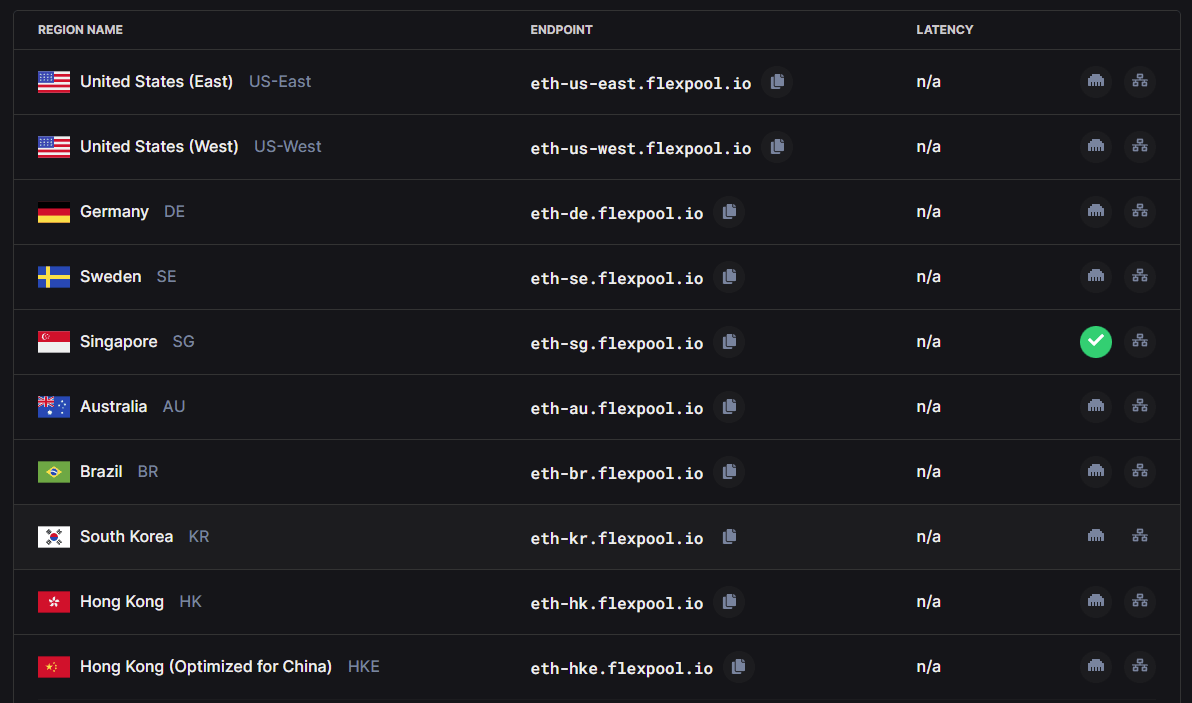
Next step is naming your worker. This is optional and you can leave it blank. But if you are going to connect two or more mining rigs to the pool then we suggest you to name your workers. This will give you a clarity on how each of your mining rigs perform.
Last step is configuring the miner. Based on your input Flexpool provides the configuration settings for all the popular miner.
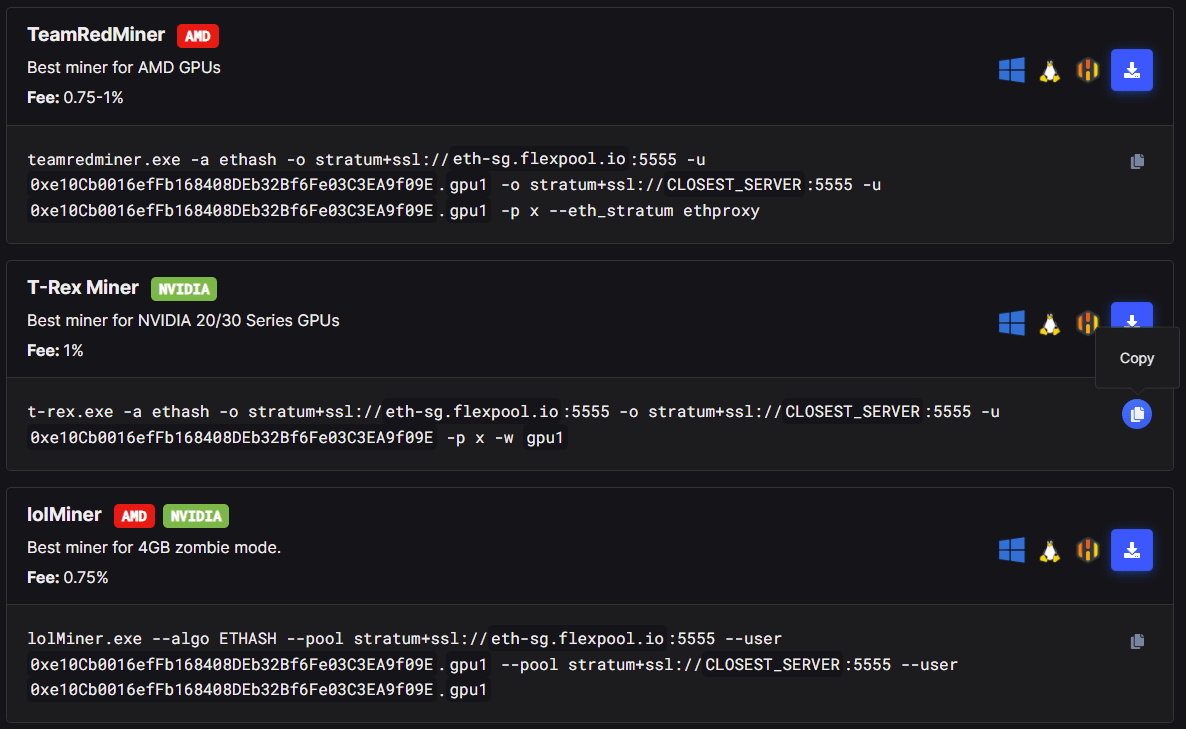
| Software | Commands | Notes |
|---|---|---|
| T-Rex Miner (NVIDIA) |
t-rex.exe -a ethash -o stratum+ssl://eth-sg.flexpool.io:5555 -o stratum+ssl://CLOSEST_SERVER:5555 -u 0xe10Cb0016efFb168408DEb32Bf6Fe03C3EA9f09E -p x -w gpu1 |
Recommended for NVIDIA 20/30 Series GPUs |
| lolMiner (NVIDIA & AMD) |
lolMiner.exe --algo ETHASH --pool stratum+ssl://eth-sg.flexpool.io:5555 --user 0xe10Cb0016efFb168408DEb32Bf6Fe03C3EA9f09E.gpu1 --pool stratum+ssl://CLOSEST_SERVER:5555 --user 0xe10Cb0016efFb168408DEb32Bf6Fe03C3EA9f09E.gpu1 |
Best for 4GB cards |
| TeamRedMiner (AMD) |
teamredminer.exe -a ethash -o stratum+ssl://eth-sg.flexpool.io:5555 -u 0xe10Cb0016efFb168408DEb32Bf6Fe03C3EA9f09E.gpu1 -o stratum+ssl://CLOSEST_SERVER:5555 -u 0xe10Cb0016efFb168408DEb32Bf6Fe03C3EA9f09E.gpu1 -p x --eth_stratum ethproxy |
Best miner for AMD |
| PhoenixMiner (AMD / NVIDIA) |
PhoenixMiner.exe -pool ssl://eth-sg.flexpool.io:5555 -pool2 ssl://CLOSEST_SERVER:5555 -wal 0xe10Cb0016efFb168408DEb32Bf6Fe03C3EA9f09E.gpu1 |
– |
| GMiner (NVIDIA / AMD) |
miner.exe -a eth --ssl 1 -s eth-sg.flexpool.io:5555 -u 0xe10Cb0016efFb168408DEb32Bf6Fe03C3EA9f09E.gpu1 --ssl 1 -s CLOSEST_SERVER:5555 -u 0xe10Cb0016efFb168408DEb32Bf6Fe03C3EA9f09E.gpu1 |
– |
The code tells the miner what algorithm to use (-a ethash), the wallet address (-u 0xe10Cb0016efFb168408DEb32Bf6Fe03C3EA9f09E), the pool server to connect to (-o stratum+ssl://eth-sg.flexpool.io:5555), password (-p x) and worker name if you’ve specified (gpu1).
All miners uses a similar syntax and tweaking them isn’t too complicated.
All you have to do is copy the command and use it in your miner.bat file. Do not use the table. Instead copy the code shown on Flexpool website. It should be your Ethereum address.
Here is how its done:
Configuring miner:
Unzip the miner which you’ve downloaded and within the folder you’ll usually find the sample .bat files like you see in the image below.

You can either edit the existing ones or create a new .bat file. For example in T-Rex miner right-click on ETH-flexpool.bat file and click Edit which will open notepad.
Next copy the command of T-Rex miner shown on Flexpool and replace the existing command. Use command that corresponds to your chosen mining software.
t-rex.exe -a ethash -o stratum+ssl://eth-sg.flexpool.io:5555 -o stratum+ssl://CLOSEST_SERVER:5555 -u 0xe10Cb0016efFb168408DEb32Bf6Fe03C3EA9f09E -p x -w gpu1
Once it is configured save the file and exit. Make sure it is .bat extension and not a .txt file. Next Double-click the .bat file which you just created or edited when you’re ready to mine.
That’s it! You’re now mining ETH and you’ll see the following window on the background.
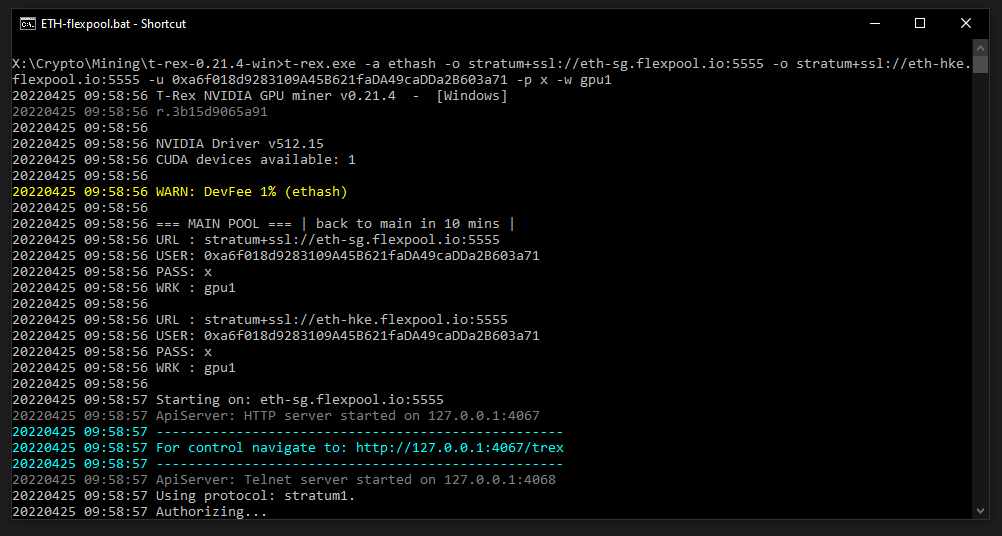

Carefully watch the miner window at the start and ensure if the hashrate is being submitted to the pool. If it is being submitted then success.
Monitoring hashrate & checking rewards
Other than the hashrate reported on your miner you can also monitor your GPU hashrate on the mining pool dashboard.
After you’ve mined for sometime go to flexpool.io and enter your wallet address at the search bar. The pool dashboard will display your real time hashrate and your mining rewards you’ve acquired so far.
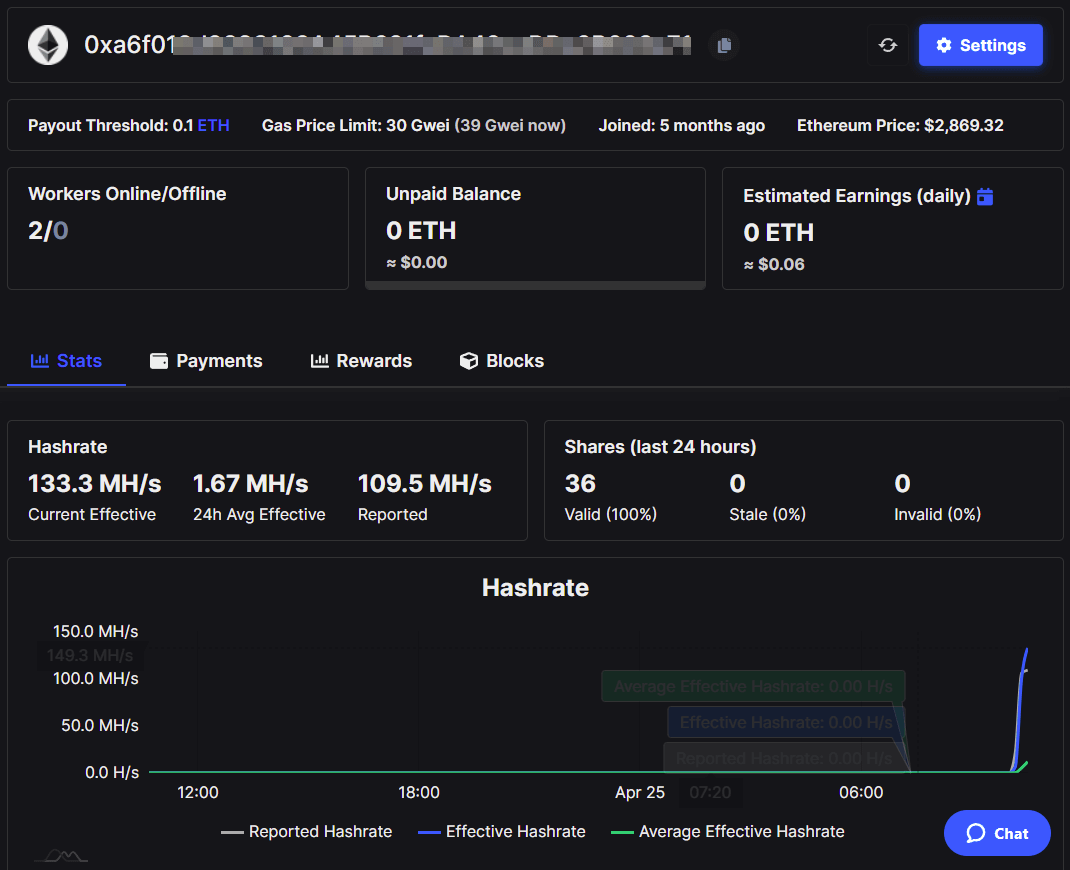
Depending on the pool you can either withdraw your mining rewards manually to your specified eth address or they get sent automatically once you reach the minimum threshold. Flexpool does auto pay once you reach the minimum threshold.
On Flexpool you can also adjust the payout settings. Instead of ETH network you can get paid on Matic network. Learn more about the L2 mining payouts where we’ve also explained how to change network to Matic, adjust min pay and gas fees.
Calculating mining rewards
Your mining pool dashboard will display the estimated daily earning based on your hardware hashpower. It’ll show how much ETH you’ll mine in a day and its $ value.
Additionally to calculate your revenue you can also use mining calculators. How much you can earn and how much you’ll mine is primarily based on how much hashrate you have.
To measure the estimated daily revenue you need your hardware’s Mhash/second (MH/s) figures. Input this number in whattomine Ethash field. Then at the bottom adjust the electricity costs of your location and click calculate. ETH mining calculator will display your likely mining rewards and the potential profit from your mining operation.
Other than electricity costs and hardware costs; mining difficulty, pool fees, payout schemes are all going to affect your profits. Network difficulty do change everyday so use the calculator daily to estimate your profits.
Based on the values shown on your mining dashboard and the calculator you can determine whether mining Ethereum will be profitable or not.
It’s crucial to optimize the GPUs in terms of power usage, clock speed, and memory timings to achieve great figures. Here we’ve not covered all those advanced mining techniques such as bios flashing, overclocking GPU and undervolting etc. Setting up a successful mining farm is not this is about and its outside of the scope of this guide.
For now we’re done with this Ethereum mining guide. If you got any questions then do let us know in the comments.


